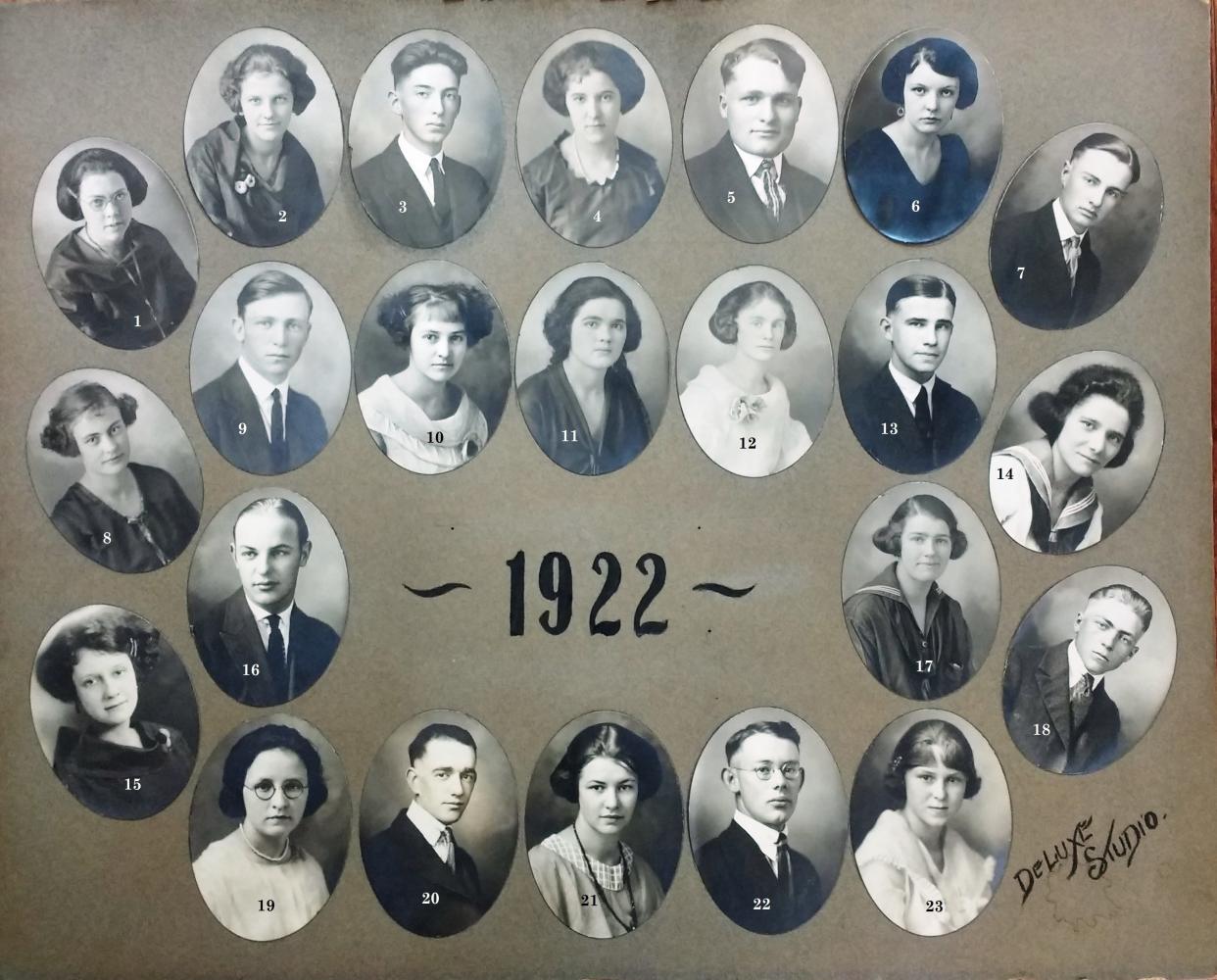Celebrating the Centennial: Some in GHS class of 1922 had to find temporary housing

Editor's note: In 1922, Gaylord became a city. In recognition of the 100th anniversary of that development, the Herald Times will run a series of articles about the culture, history, and people of Gaylord.
GAYLORD — Gaylord citizens voted on March 13, 1922 to change its form of government from a village to a city. Nearly three months later on June 7, the Class of 1922, totaling 23 students, graduated from Gaylord High School.
The school was located on the southeast corner of South Center Avenue and 2nd Street near what is now the community or recreation center. The center served as the school's gymnasium in the 1930s, according to Phil Alexander of the Otsego County Historical Society.
More: Gaylord is turning 100 years old and plans to kick off the party Memorial Day weekend
On sheer numbers, the Class of 1922 was small compared to the present day Gaylord High School (GHS). Earlier this month, over 200 made up the Class of 2022.
One reason why the class was smaller, according to Alexander, is there were a lot of one-room schools in the county and surrounding area.
"If you graduated from eighth grade back then that would have been a big deal," he said.
In 1922 Gaylord wasn't as developed as it is today. The 1920 census lists the city's population at 1,701 and Otsego County's population at 6,043. In the 2020 census, the city had a population of 4,286 and the count was at 25,091.
For the high school students who lived outside of Gaylord in 1922, they had to find temporary housing in the city.
"If you lived outside of Gaylord you had to live in town in order to go to GHS," Alexander said. "Some would come in and live at someone's house and work off their room and board so they could attend school."
There were cars but the numbers were limited as the road system in the town and the county was starting to develop. Alexander said pictures from 1910 to 1915 show horses and some cars. Main Street was paved in 1913 while U.S. 27 — the main north south highway — was paved in 1928.
The train was still the major mode of transportation in 1922, Alexander said.
Gaylord was the only high school with grades 11 and 12. St. Mary didn't have a high school senior graduation until 1929, said Alexander. He noted that there were high schools in Elmira, Johannesburg and Vanderbilt.
There was organized athletics for the Class of 1922 and GHS even had a girls basketball team, Alexander said. Mabel Shannon, the mother of Claude Shannon, served as the first coach of the girls team in 1904.
Subscribe: Check out our offers and read the local news that matters to you
The Class of 1922 did have the opportunity to attend dances. Gaylord had a movie theater, bowling hall and a roller rink to provide additional entertainment options.
Life was different 100 years ago. If you lived in town, you likely had electricity. However, for those who lived in rural parts of the county, electricity was scarce.
"Across from the museum was a meat freezer," said Alexander. "If you butchered a steer or hog, and lived out in the county you had to haul it into town to freeze it."
Alexander said the school year ran from September to June like it does now.
"In October when area farmers were harvesting potatoes, the Gaylord schools would take one or two weeks off so the farmers could hire the students to pick up the potatoes at harvest time," he said.
This article originally appeared on The Petoskey News-Review: Celebrating the Centennial: Some in GHS class of 1922 had to find temporary housing

